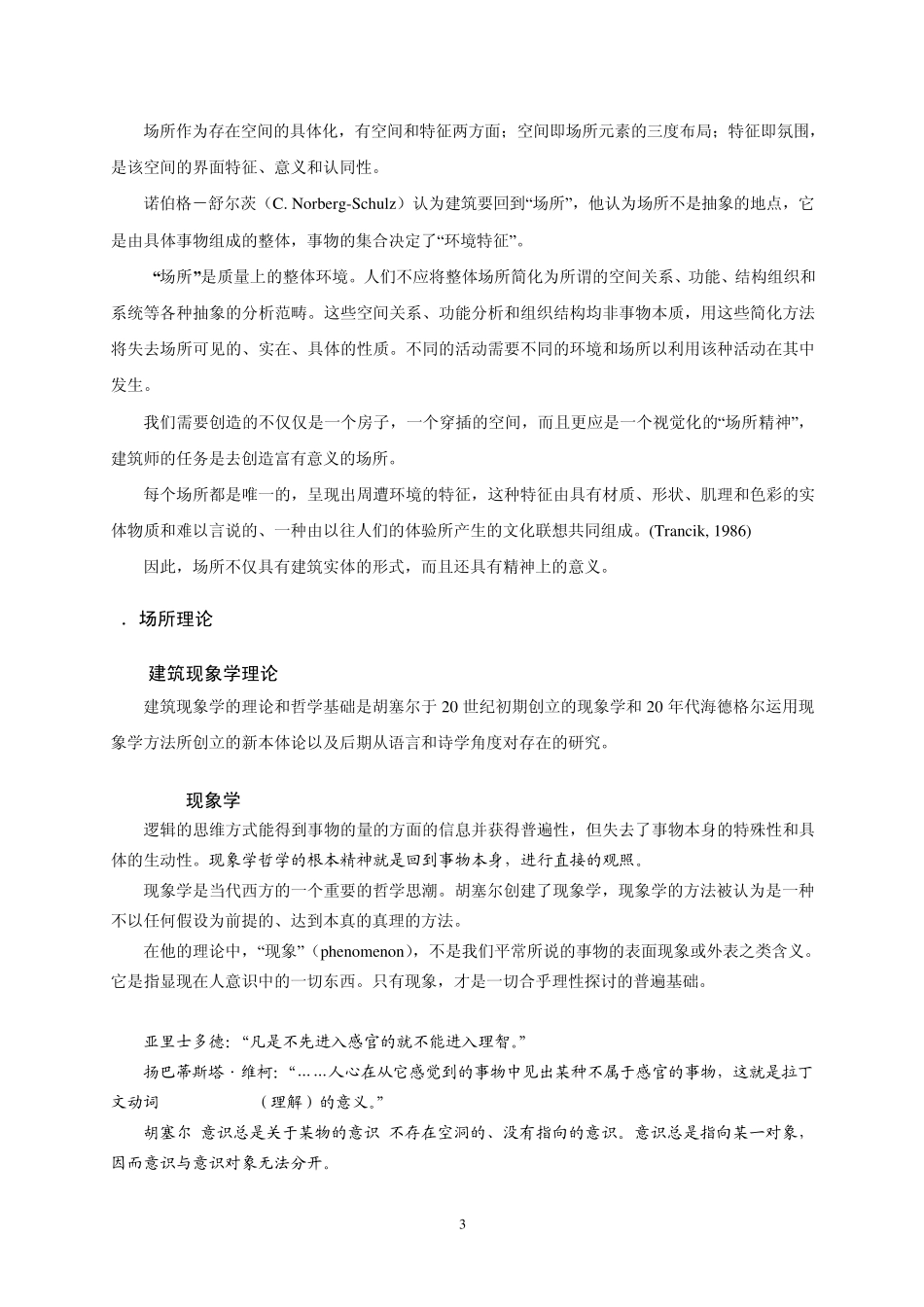1 课程名称: 场所精神理论(The Theory of Spirit of Place) 教学要求及目的: 了解场所精神理论,理解该理论是城市设计理论体系中的重要组成成分,并掌握将该理论运用到有关设计中去创造具有独特个性的场所的方法。 课程主要内容:1、“场所” 的概念。 2、“场所” 和“空间” 的区别。 3、场所理论及其在城市设计理论体系中的地位。 4、场所理论的应用。 主要参考书 场所精神— — 迈向建筑现象学 Christian Norberg-Schulz 著、施植明译,台湾:田园城市文化事业有限公司,1995 城市设计的维度 Matthew Carmona 等编著、冯江等译 ,南京:江苏科学技术出版社,2005 人性场所— — 城市开放空间设计导则 [美]克莱尔·库珀·马库斯等编著, 俞孔坚等译,中国建筑工业出版社 ,2001 景观设计学— — 场地规划与设计手册 [美]约翰.O.西蒙兹著, 俞孔坚等译,中国建筑工业出版社 ,2000 建筑形式论— — 迈向图象思维 陈伯冲 著,中国建筑工业出版社 , 1996 街道与城镇的形成 [美]迈克尔·索斯沃斯、伊万·本-约瑟夫著, 李凌虹译,中国建筑工业出版社 , 2006 1.1什么是“场所”(Place)? 构成场所的三个基本组成部分: a) 静态的实体设施— — the static phy sical setting 场所的实体建构;建筑物、景观和美学特征的体现。 The actual physical structure of a place. The reality of its buildings, landscape, and aesthetic quality. b) 活动— — the activ ities 建筑物和景观如何被使用,身处其中的人们如何互动,以及文化习俗如何起到影响作用。 How the buildings and landscape are used. How a place‟s people interact with it, and how their cultural institutions have affected it. c) 含义— — the meanings 一个非常复杂的层面。首先是人意向和体验的结果,大多数的场所特征起源自人们对场所的实体和功能方面的反应。 A more complex aspect, primarily the result of human intentions and experiences. Much of a place‟s character will be derived from peoples reaction to its physical and function aspects. 场所的这三个基本元素彼此相互依存、密不可分。 2 1.2 “场所”和“空间” ( Place and Space) 空间 老子:“埏埴以为器,当其无,有...


